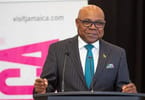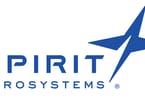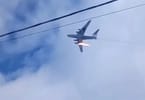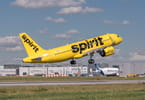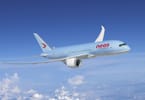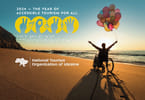NEW YORK — Competition in the nation’s busiest air travel market is the fiercest in decades.
Airlines are slashing fares, stamping their names on local institutions and aggressively courting corporate fliers in a bid to capture passengers — particularly lucrative business travelers — at a time the number of paying passengers flying in and out of the New York area is down by double digits.
“It is probably as intense a market as I have seen in my 25 years with American Airlines,” says Jim Carter, vice president for passenger sales in American Airlines’ eastern sales division. “There are a number of dynamics working that many of us have never seen before.”
•Delta is offering rewards club members 2,500 bonus miles through July 26 for each leg of its shuttle flight that caters to business fliers traveling from New York to Washington or Boston.
•Southwest, a low-cost airline known for triggering fare cuts across the board as other airlines try to compete, begins flying to Chicago and Baltimore from LaGuardia airport on June 28.
•British Airways plans all-business-class service between London City Airport and John F. Kennedy this year.
“The goal right now is make it through these tough times,” says Terry Trippler, founder of TerryTrippler.com, a travel information website, about the efforts being taken in the New York market. “But they want to be in the position to grow when the economy makes its big turn.”
More than 100 million passengers a year flow through the New York area’s three major airports, LaGuardia, JFK and Newark Liberty. That’s more traffic than in any other U.S. market and a volume second only to London in the world.
Additionally, New York’s status as an epicenter of the world’s financial industry has long made it a key battleground for airlines coveting the high-spending, frequent-flying business traveler.
But the New York market has not been immune to an economic downturn that has dried up corporate travel budgets and salaries and resulted in fewer people flying for business or pleasure.
In the first quarter, the number of paying passengers going through New York’s three major airports and the smaller Stewart International in Newburgh, N.Y., was down 11.6% from the same period last year, according to the Port Authority of New York and New Jersey.
Business travelers are particularly important to the airline industry’s bottom line, since they traditionally buy the more expensive seats in first and business class, and pay more for last-minute trips.
Recently, however, companies have slashed travel budgets as much as 40%, prohibiting some employees from traveling. Others may be required to fly coach or seek the lowest available fares whenever they do fly, says Carol Ann Salcito, president of corporate consulting firm Management Alternatives.
“There are a number of policies going in that direction, which may mean that some companies are not necessarily flying their preferred carriers,” she says. “If there’s a lower airfare in the market, that’s what they’re requiring their employees to take.”
Airlines also face competition from buses and trains. Amtrak has cut some fares on Northeast routes that mirror the air shuttles. And Megabus.com, which largely caters to leisure travelers and offers service between New York, Washington, Boston and several other cities has one-way fares for as low as $1.
“Everybody wants a piece of the pie, and we’re hoping with our discounted fares, Amtrak can get a piece of that pie,” says Amtrak’s Karina Romero.
In addition to offering 5,000 bonus miles for round trips on its shuttle to Washington and Boston, Delta cut last-minute shuttle fare prices by up to 60%. The fare cuts and bonus miles are pieces of a broader, aggressive push by Delta to become “New York’s hometown carrier.”
Delta now calls New York a hub, along with Atlanta and five other U.S. cities, connecting travelers to destinations around the country and the world. In recent months, it has expanded its team of executives based here, become the official airline sponsor of the Yankees baseball team, and ramped up its marketing, branding its name on everything from a Midtown building to a restaurant near Grand Central Station.
“We wanted to make sure that we really became part of the fabric of New York,” says Gail Grimmett, senior vice president for New York. In addition to the Yankees, the airline has been the official airline sponsor of the Mets for several years. “We’re always looking at ways to invest in the city, to improve the customer experience and to earn loyalty.”
Since its merger with Northwest, the airline is making sure companies are aware of its larger network of destinations, including flights from JFK to Narita Airport in Tokyo that start today. New York is “the No. 1 business mecca, so for us … the business passenger is extremely important,” says Grimmett, noting that 40% of Delta’s fliers in New York are business travelers. “While they may represent a lower proportion of travelers, they bring a greater proportion of revenue. … Any airline will tell you that.”
As Delta and Continental add more flights, and Southwest joins New York-based low-fare carrier JetBlue at a major local airport, American Airlines is also offering fare deals and touting such perks as its new $1.3 billion terminal at JFK.
“It’s obviously causing us to work even harder to make sure we’re attracting the right customers to American and working even harder to ensure that we retain those customers,” Carter says of the increased competition.
For the past two years, Southwest has gone after business passengers with offers of reward credits and free drinks on board. But as it enters LaGuardia during a difficult economic time for the industry and the nation, Southwest says its hallmark low fares could be the greatest lure of all. One-way fares from LaGuardia will be as low as $89 to Chicago’s Midway Airport and $49 to Baltimore/Washington International airport.
“In the past, low fares were seen as only things leisure customers were taking advantage of,” says Southwest spokeswoman Whitney Eichinger. “We know now that everyone is taking advantage of that.”
WHAT TO TAKE AWAY FROM THIS ARTICLE:
- Airlines are slashing fares, stamping their names on local institutions and aggressively courting corporate fliers in a bid to capture passengers — particularly lucrative business travelers — at a time the number of paying passengers flying in and out of the New York area is down by double digits.
- In recent months, it has expanded its team of executives based here, become the official airline sponsor of the Yankees baseball team, and ramped up its marketing, branding its name on everything from a Midtown building to a restaurant near Grand Central Station.
- But the New York market has not been immune to an economic downturn that has dried up corporate travel budgets and salaries and resulted in fewer people flying for business or pleasure.




